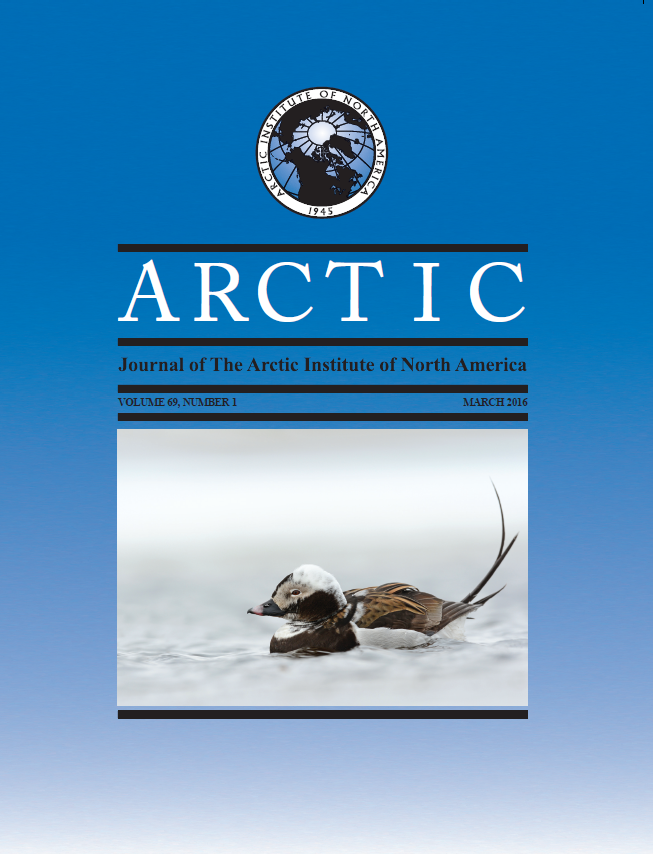Spatial Genetic Structure of Long-tailed Ducks (<i>Clangula hyemalis</i>) among Alaskan, Canadian, and Russian Breeding Populations + Supplementary Appendix Tables S1 and S2 (See Article Tools)
DOI:
https://doi.org/10.14430/arctic4548Keywords:
Clangula hyemalis, Long-tailed Duck, philopatry, population genetic structureAbstract
Arctic ecosystems are changing at an unprecedented rate. How Arctic species are able to respond to such environmental change is partially dependent on the connections between local and broadly distributed populations. For species like the Long-tailed Duck (Clangula hyemalis), we have limited telemetry and band-recovery information from which to infer population structure and migratory connectivity; however, genetic analyses can offer additional insights. To examine population structure in the Long-tailed Duck, we characterized variation at mtDNA control region and microsatellite loci among four breeding areas in Alaska, Canada, and Russia. We observed significant differences in the variance of mtDNA haplotype frequencies between the Yukon-Kuskokwim Delta (YKD) and the three Arctic locations (Arctic Coastal Plain in Alaska, eastern Siberia, and central Canadian Arctic). However, like most sea duck genetic assessments, our study found no evidence of population structure based on autosomal microsatellite loci. Long-tailed Ducks use multiple wintering areas where pair formation occurs with some populations using both the Pacific and Atlantic Oceans. This situation provides a greater opportunity for admixture across breeding locales, which would likely homogenize the nuclear genome even in the presence of female philopatry. The observed mtDNA differentiation was largely due to the presence of two divergent clades: (A) a clade showing signs of admixture among all breeding locales and (B) a clade primarily composed of YKD samples. We hypothesize that the pattern of mtDNA differentiation reflects some degree of philopatry to the YKD and isolation of two refugial populations with subsequent expansion and admixture. We recommend additional genetic assessments throughout the circumpolar range of Long-tailed Ducks to further quantify aspects of genetic diversity and migratory connectivity in this species.


